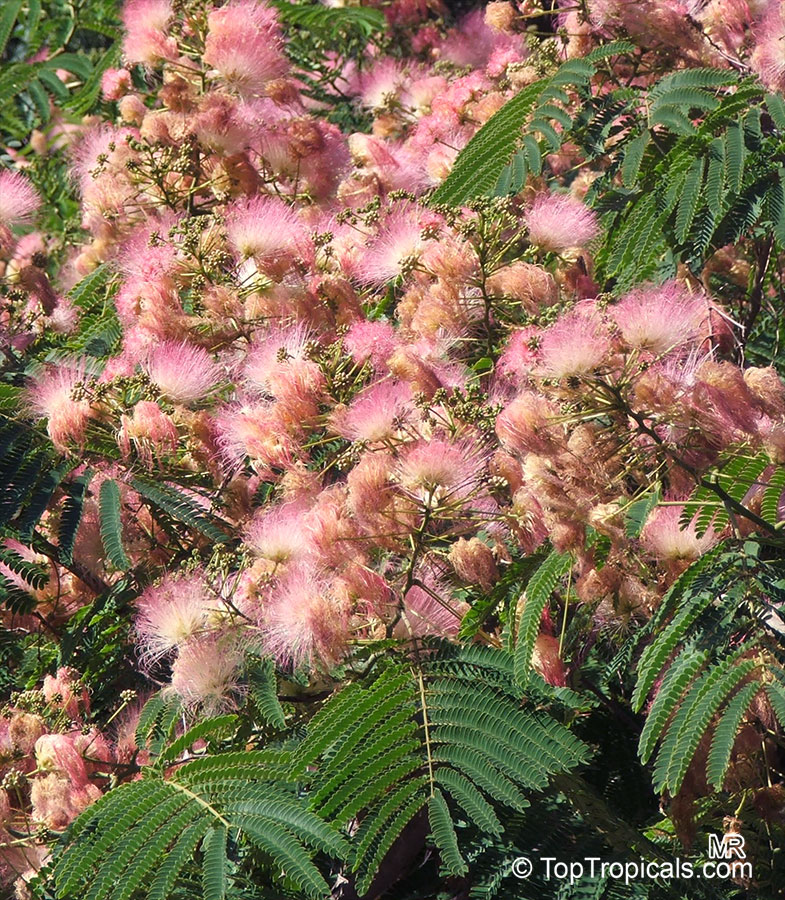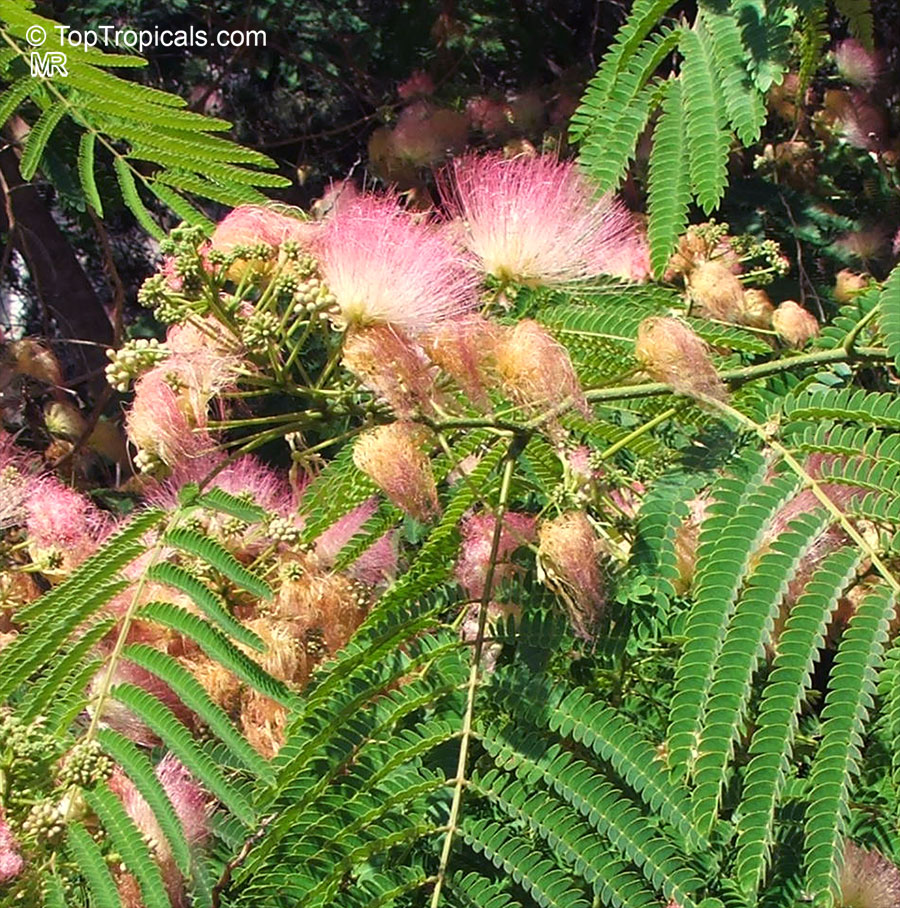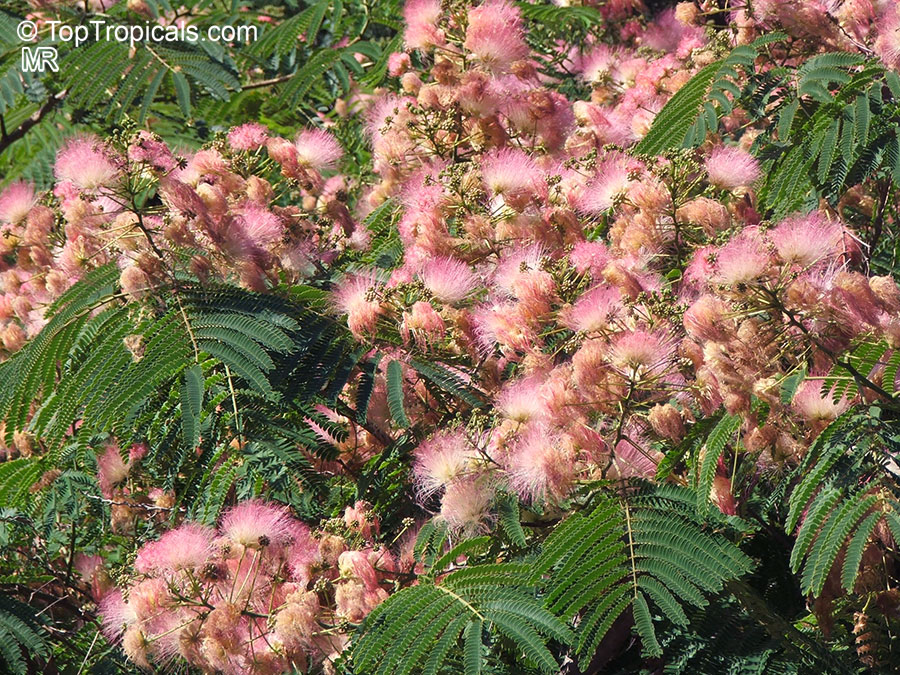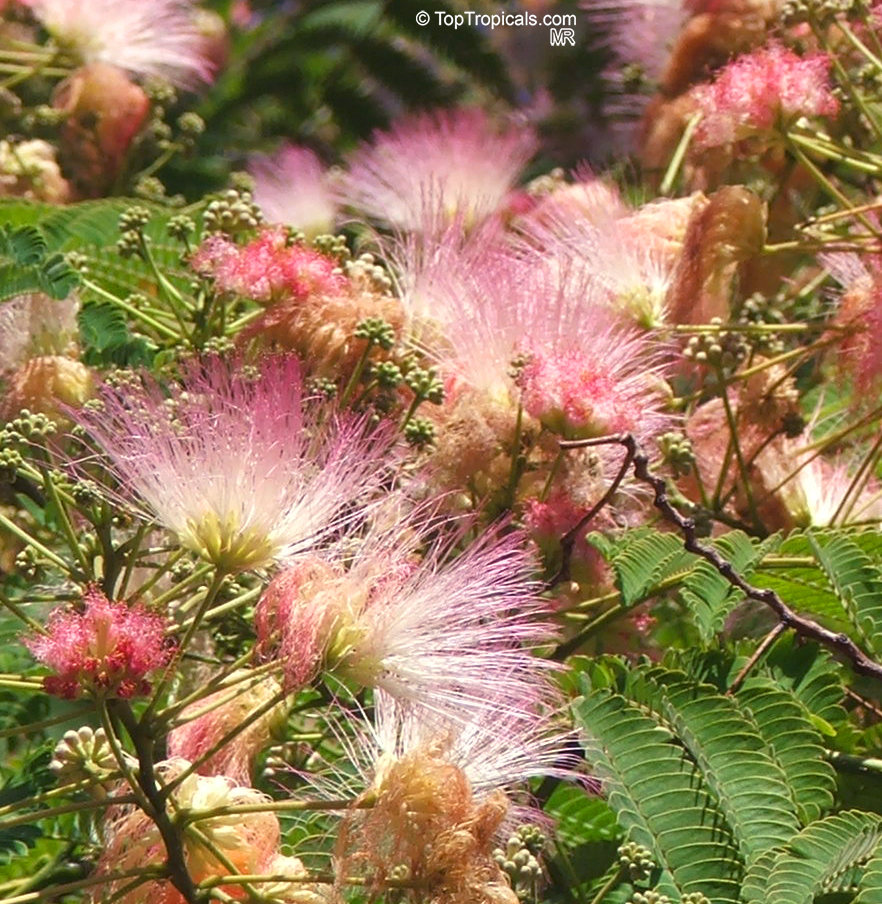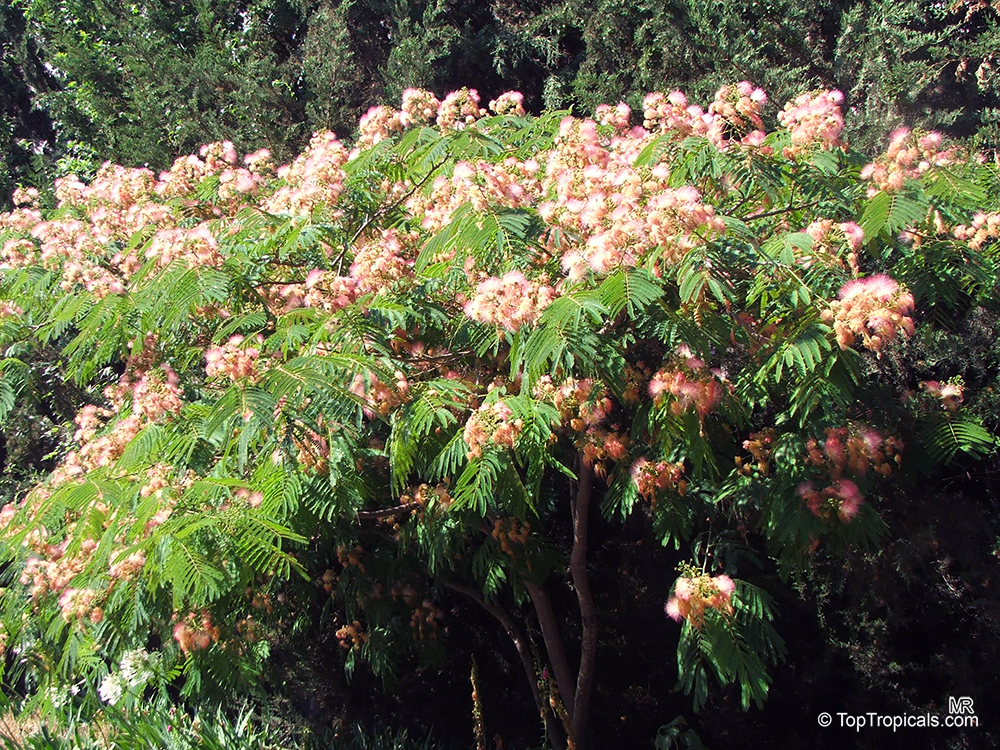Albizia - Search results
Top Tropicals Plant Encyclopedia
| Number of plants found: 5 |
Botanical name: Albizia julibrissin
Common name: Silk Tree
Family: Fabaceae
Subfamily: Mimosoideae
Origin: Asia









This tree has attractive fragrant pom-pom- like flowers, and interesting fern-like foliage. In gardens this fast growing tree grows to 20-30 ft. It has a single trunk with smooth, gray bark. Each bi-pinnate leaf is made up of hundreds of tiny leaflets coated in white hairs, giving the foliage a silvery cast. In late winter or spring, the domed crown is decked in sprays of small, globular, off-white to baby-pink flower heads. Prefers a rich, light, well drained soil. The flowers are attractive to bees, butterflies, and birds.
Link to this plant:
https://toptropicals.com/catalog/uid/albizia_julibrissin.htm
Use link to repeat this search:
https://toptropicals.com/cgi-bin/garden_catalog/cat.cgi?find=Albizia&search_op=and&keyword_op=and&language=e&number=10
&no_change_lang=1&user=tt&sale=1&first=0
